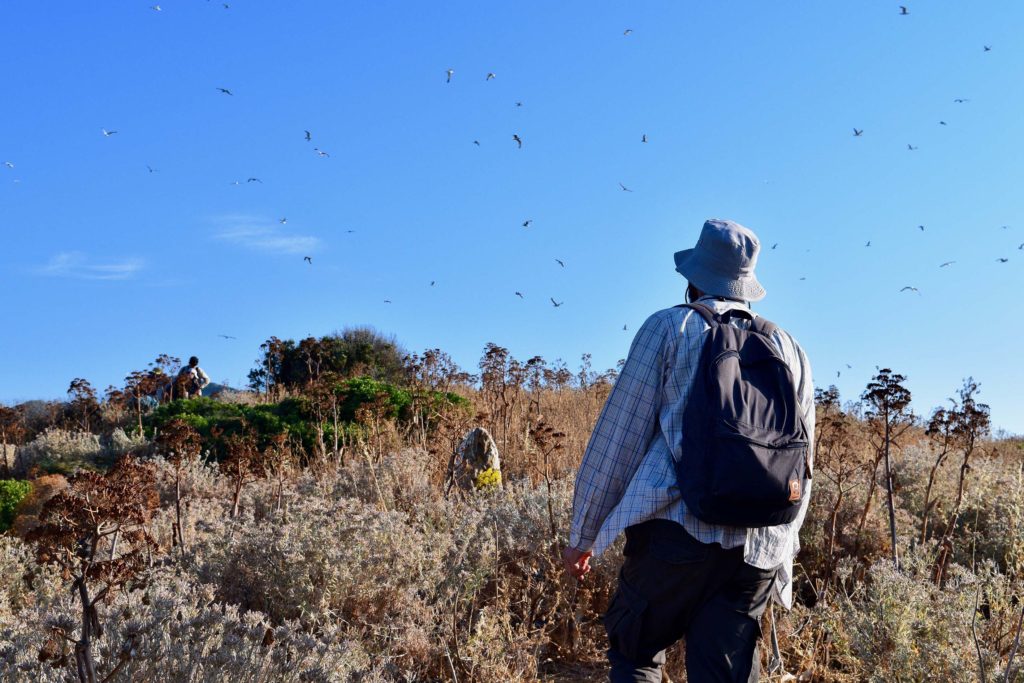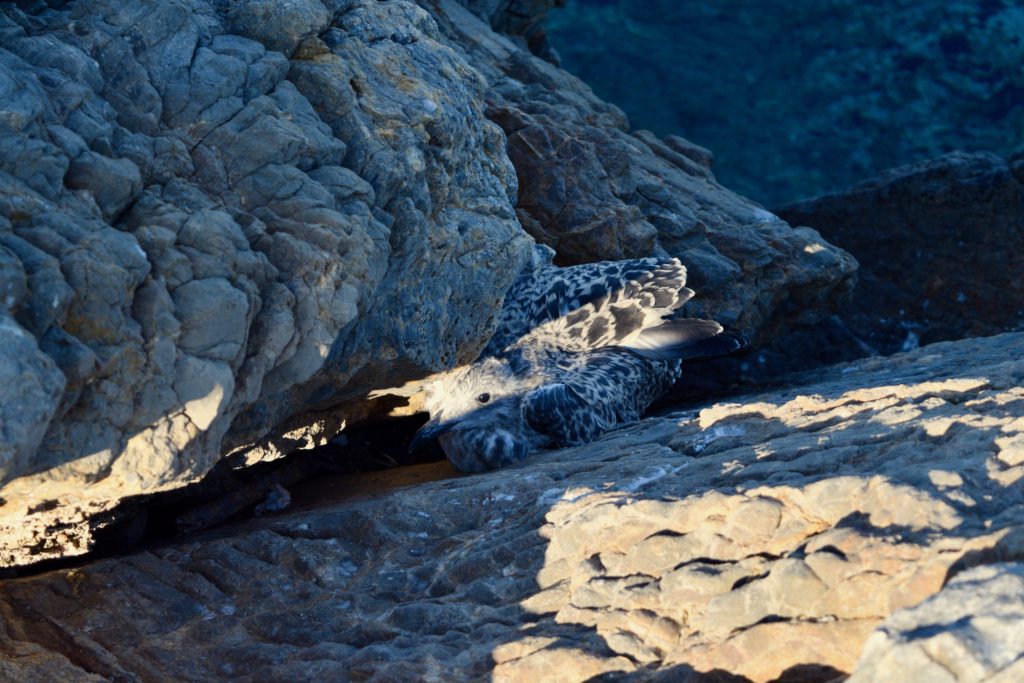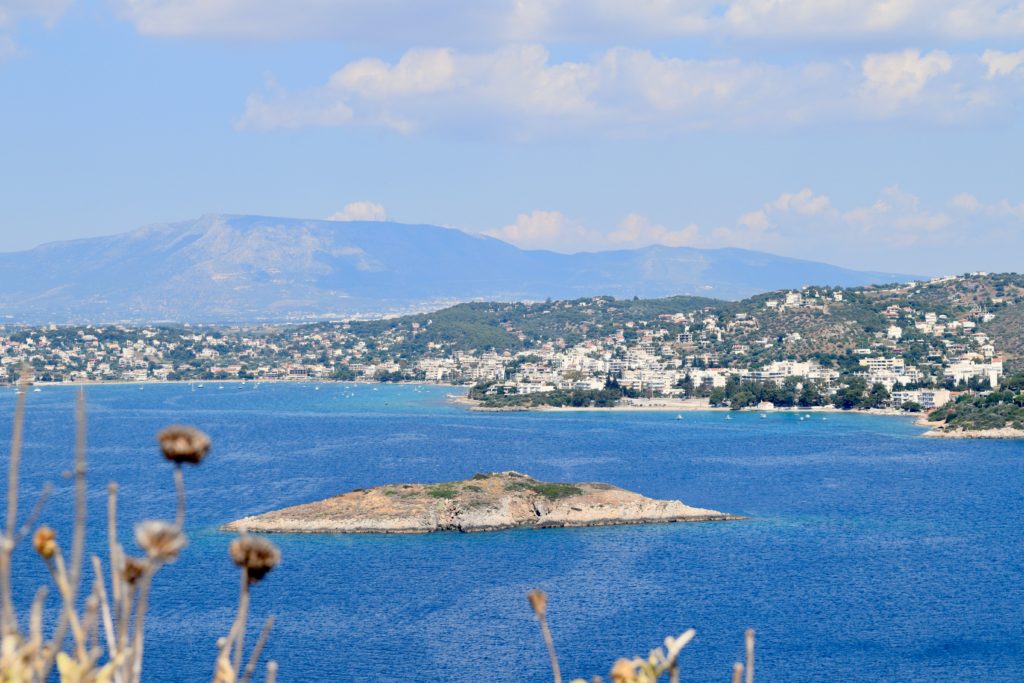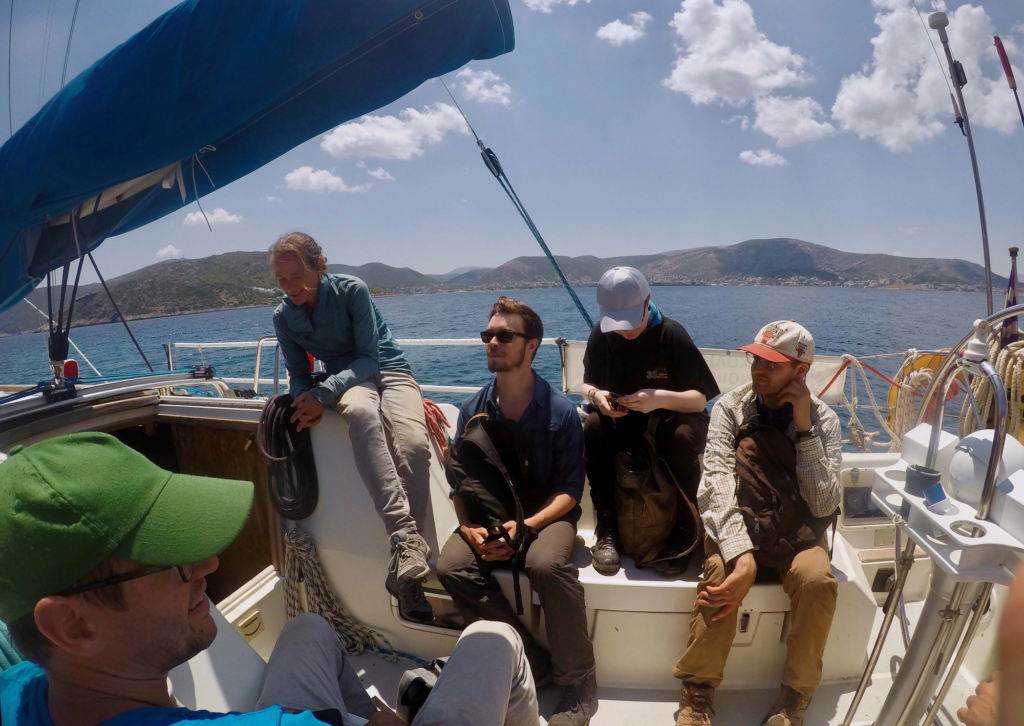Editorial Note: This post was written by Kat Apokatanidis, a University of Toronto PhD student, about a reconnaissance trip to the islet of Raftopoula.

I curse under my breath as I miscalculate my weight distribution and nearly fall backwards into the sea; gasping in surprise I whip my head up as one of my teammates holds onto me. He was helping me come ashore from the dinghy, and I hear him take in a sharp breath as he only just manages to save me from plunging into the Aegean for a morning bath. I hear the captain behind us utter a surprised cry as he attempts to stop the boat, the sudden change in weight rocking him dangerously from side to side. He comments wryly that I am a little too eager to swim and I look back at him sheepishly, apologising profusely. I manage to straighten myself back up but I am so embarrassed. My teammate pats me on the back before bending to retrieve his bag while the captain waves at me and then returns to collect the others from the main boat. I see the rest of the team in the distance straining to look at us, and wave a hand at them indicating I am fine; they wave back and cry out sighs of relief. It is only day four of the B.E.A.R.S. project and I already manage to pose a threat to a fellow archaeologist! To his credit my teammate does not seem to be at all annoyed at me; but I follow him and make sure to tell him to just let me drown next time, since he is more important than I am, being an actual archaeologist in training, while I was a tag-along philology student. He laughs and we make our way up the side of the small islet, the first stop of the day.

The islet we were to briefly inspect is aptly named Raftopoula, or ‘little-Raftis girl’; it is situated only just to the north-west of Raftis island. As I walk (very carefully) along the otherworldly terrain my legs are still shaking from the surge of adrenaline and it is all I can do not to look up at the flying seagulls, as I was increasingly distracted by their constant cries; clearly, this islet is theirs, and our presence is largely disturbing them. I pause in order to wait for the rest of my team and get instructions from our team leader. Once we all assemble, we are told that we’re only here for a reconnaissance mission, to determine if we will need to set aside time to conduct gridded collection here in future weeks. As I roam around Raftopoula, I cannot help but feel as if we are at the edge of the world. The low hills and jagged cliffs, coupled with the eerie, bluish hue of the morning sun all work to create an atmosphere of an abandoned frontier, or desolate backwater, depending on how you perceive the edge of the world to feel like. I don’t find much on the surface, though others do have some artifacts in their bags. I hear them comment that the diagnostics are like the ones found on Raftis. I am eager to get there and see what all the fuss is about; for now, I turn my attention back to the ground and attempt to wade through the thickets of maquis. One of my teammates cautions as I walk towards a small opening; there is a pocket within the thicket to my right where a young seagull fledgling is taking cover. Not being able to fly yet, it sits immobile, its method for avoiding predators. Suddenly, the cries from the gulls overhead make so much more sense, their worry for their offspring ear-splittingly evident.

I thank my teammate for the heads-up and carefully make my way through the thicket, trying to avoid disturbing the little one further, while also trying to avoid spider webs. I find some pieces of pottery. The fact that we find anything out here on this tiny islet is intriguing. I eagerly try to hear what the others have to say about the possible reasons people would dock their ships here in the ancient past. It did not seem to be an easy thing; our own captain took some time to find a proper place to drop anchor before taking us to shore. It was only because of the day’s prime weather conditions with minimal winds and soft currents as well as his impressive navigating skills that gave us the opportunity to even come ashore. Thus, the mystery remains, though this is not to say that ancient sea captains were less skilled in the art of seafaring. As the call to go back to the ship is heard, I cannot help but speculate about their motivations; what were ancient people doing out here on a tiny, rocky islet with no obvious anchorage?

We return to the shore in order to reboard the boat and head on to Raftis, where we will spend most of the day surveying grid squares. As I (very very carefully) board the dinghy, carefully following his calm instructions, my teammate from earlier standing at the ready next to me, I belatedly realise that the findings from this first week on the project all have exceeded any expectations and logical deductions. Safely in the dinghy, my teammates all securely sitting around me, we gingerly make our way to the main boat, trying to avoid getting tossed right into the jagged cliffside of the islet as the winds have slightly picked up. Thanks to the captain’s concentration and focused expertise, we arrive, dry and sound, at the main boat, the seagulls now quiet having returned to their nests. Surely, I think, the people going to Raftopoula in the Bronze Age were either adventure seekers or trying to get away from something; indeed, my excitement rises further at the thought that they may have been pirates, exceptionally skilled at navigating and intent on hiding away their riches. Yet with no discernible hiding places, nor any visible ways of defence, the islet’s otherworldly pull creeps into my mind and nests there, much like the seagull fledglings, quiet and still but ever aware, demanding caution and respect.

